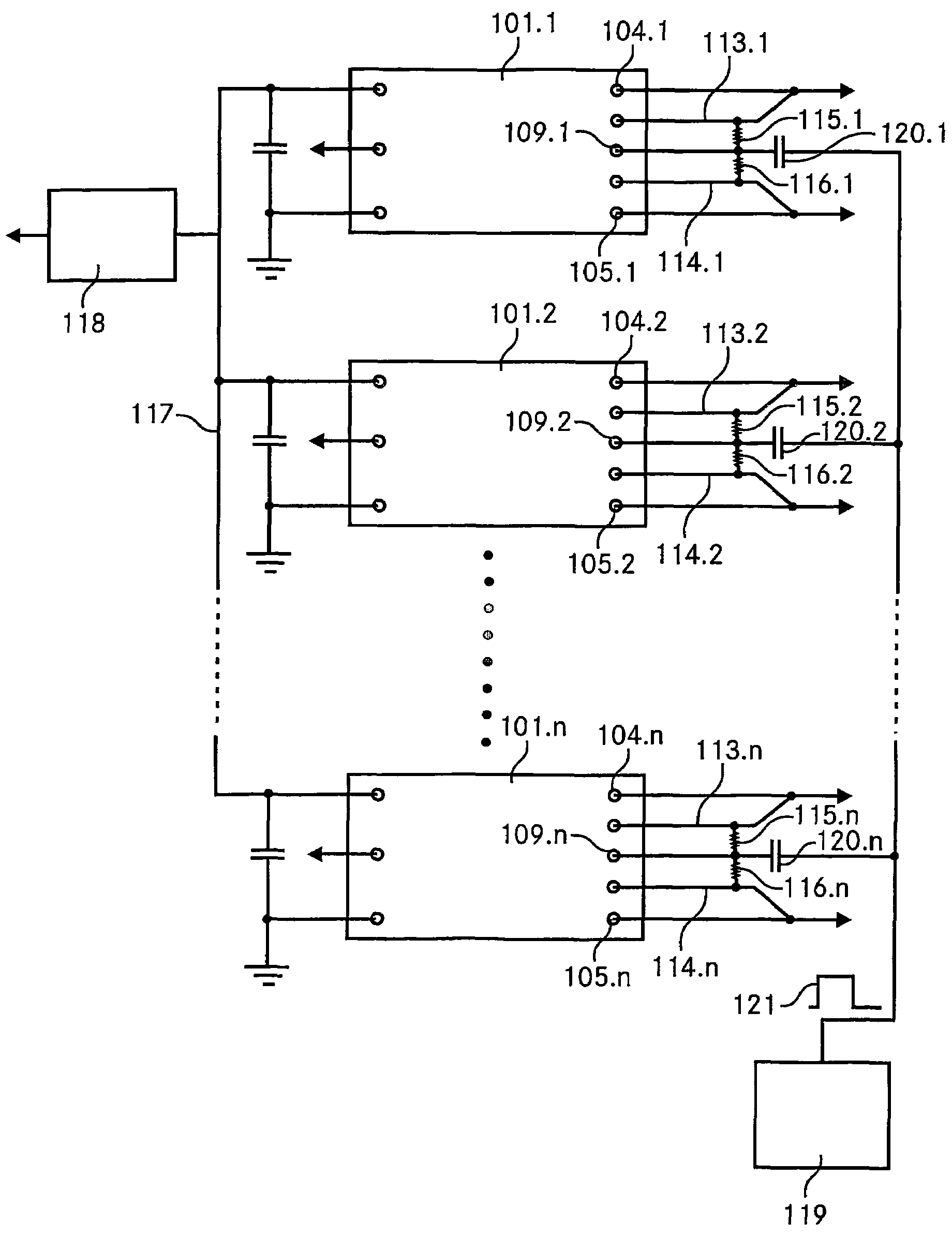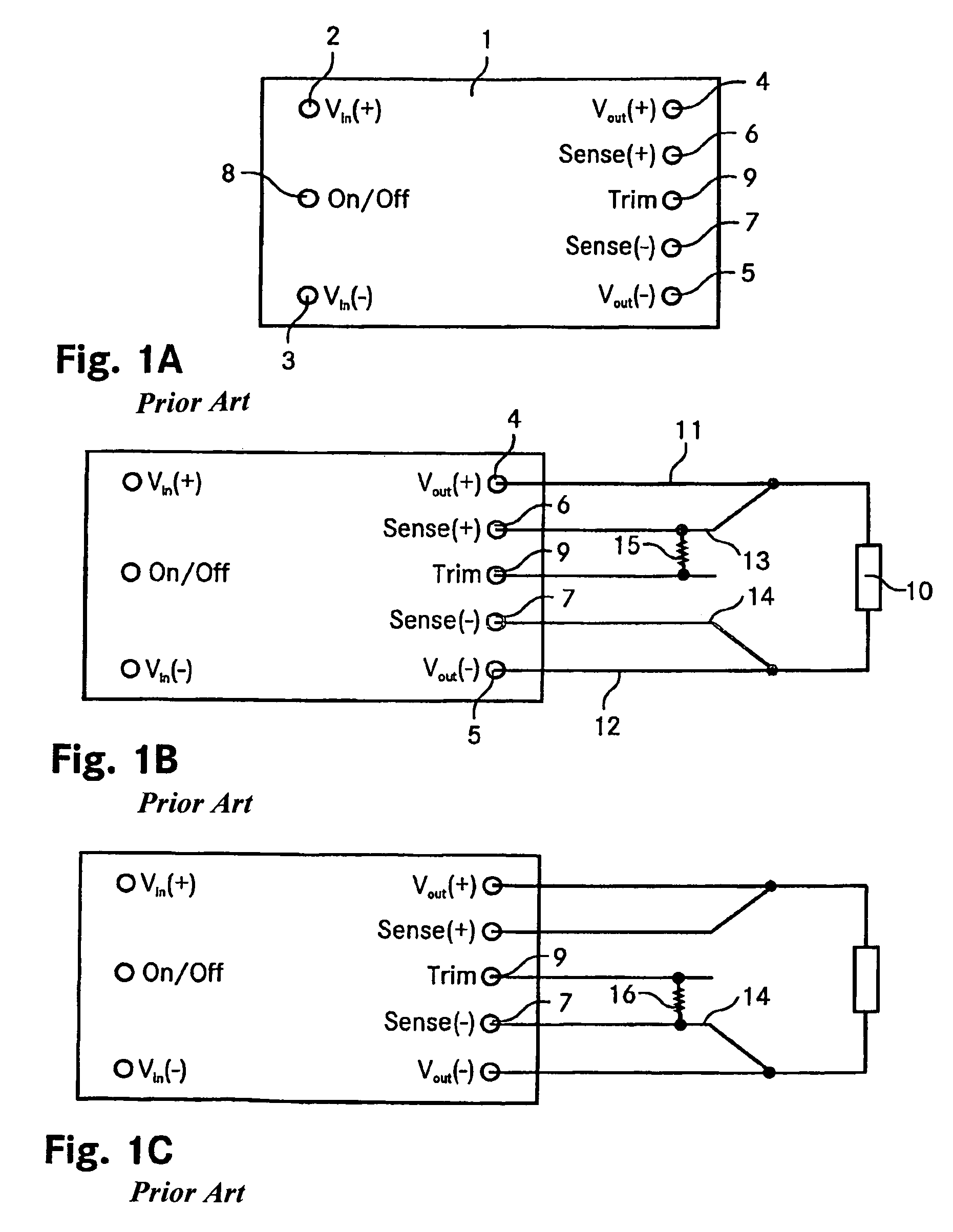DC-DC switching converter device
a converter device and dc-dc technology, applied in the direction of dc circuit to reduce harmonics/ripples, ac network circuit arrangements, power conversion systems, etc., can solve the problems of frequency beating phenomena between different converters, noise reduction that has to be suppressed, and additional low frequency interference, etc., to achieve the effect of reducing noise and being easy to implement into the usual converter circui
- Summary
- Abstract
- Description
- Claims
- Application Information
AI Technical Summary
Benefits of technology
Problems solved by technology
Method used
Image
Examples
Embodiment Construction
[0042]The FIGS. 1A-C are schematic representations of an industry standard quarter-brick DC-DC converter and of its trim functionality. The FIG. 1A shows the pin out of a standard quarter-brick DC-DC converter 1. It features eight pins, namely two input pins 2, 3 indicated by Vin(+) and Vin(−) respectively, two output pins 4, 5 Vout(+) and Vout(−), two sense pins 6, 7, denoted by Sense(+) and Sense(−), a control pin 8 (On / Off) and finally a trim pin 9 (Trim). The dimensions of a quarter-brick device are 37 mm×58 mm (1.45″×2.3″), its height usually amounts to about 13 mm or less. The pins are on a spacing of 51 mm (2″). The sense pins 6, 7 allow for sensing the line drop and accordingly compensating the output voltage.
[0043]Note, that the invention is as well applicable to eighth-brick DC-DC converters, having the same pin out as described above. Their standard size is 23 mm×58 mm (0.90″×2.3″) with a typical width of about 9 mm. Again, the pins are on a spacing of 51 mm (2″).
[0044]Th...
PUM
 Login to View More
Login to View More Abstract
Description
Claims
Application Information
 Login to View More
Login to View More - R&D
- Intellectual Property
- Life Sciences
- Materials
- Tech Scout
- Unparalleled Data Quality
- Higher Quality Content
- 60% Fewer Hallucinations
Browse by: Latest US Patents, China's latest patents, Technical Efficacy Thesaurus, Application Domain, Technology Topic, Popular Technical Reports.
© 2025 PatSnap. All rights reserved.Legal|Privacy policy|Modern Slavery Act Transparency Statement|Sitemap|About US| Contact US: help@patsnap.com



